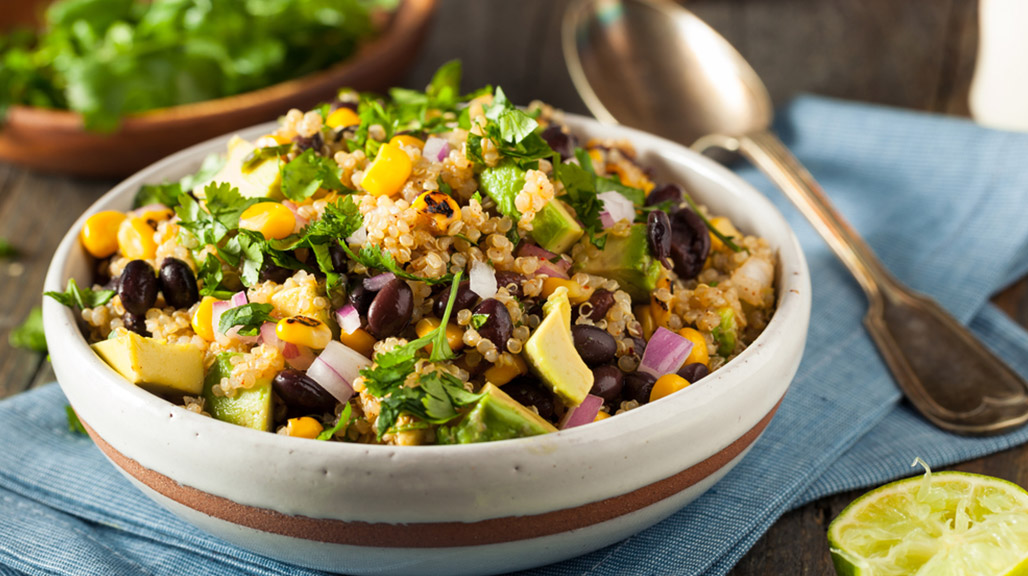New Year, New Eats: 2017 Food Trends
 Contributed by
Pauliina Salmenhaara
March 2, 2017
Contributed by
Pauliina Salmenhaara
March 2, 2017

After reading through reviews by various leading food associations and organisations on the food trends for 2017, I’m now that much wiser, and want to share some chosen bits and pieces with you.
I was curious to know what is considered a trend in 2017, bearing in mind that trends can very much be created when reported about often enough (so don’t take them too seriously!). Although my personal field is vegan, plant-based cuisine, in this summary I’ve included other types as well, to give a more broad view on the trends. I hope other chefs, culinary professionals, home-based cooks, diners, restaurant managers, and more will find them helpful in creating menus.
I Based My Summary On The Forecasts Listed Below On The Link List, Some Of The Biggest Being:
McCormick’s Flavour Forecast
Done every new year, with more than one hundred chefs, culinary professionals, trend trackers, and flavor experts from McCormick tracking data, insights, products, cuisines, recipes, and restaurant menus around the globe to find what’s next in flavour.
National Restaurant Association’s Hot 2017 Food Trends
Based on a survey of nearly 1,300 professional chefs – all members of the American Culinary Federation – to find the menu items that will impact sales in the year ahead.
Mintel’s Six Key Trends
Set to impact the global food and drink market. Mintel is the world’s leading market intelligence agency.
Without Further Ado, Here Are My Observations:
Spices, Flavours, And Ingredients
- Baharat: A fragrant, all-purpose Eastern Mediterranean blend of spices such as cumin, cardamom, black pepper, nutmeg, and more
- Skhug: A Middle Eastern hot sauce made with Thai bird eye chilies, cumin, cardamom, coriander, garlic, parsley, cilantro, olive oil, and lemon juice
- Mixing Eastern Mediterranean ingredients with Western European classics
- Mixing sweet with spicy – ie. chili syrup, pepper syrup
- Syrups: Brown rice syrup, sorghum syrup, barley malt syrup, yacon syrup, coconut nectar, and piloncillo
- Mojo Verde: Spanish green sauce with cumin, cilantro, parsley, and green chilies
- Romesco: Mildly spicy, nutty Spanish sauce made with roasted red pepper, smoked paprika, and almonds.
- Sherry Wine And Vinegar
- House-Made Condiments: Such as made-from-scratch ketchup, mustard, or mayonnaise
- Japanese influences such as seaweed, ponzu, miso, Japanese pickles, and plum vinegar
- Purple is in, from the obvious acai berries and elderberries, to purple cauliflower and asparagus
- Sorghum, the “new cereal”, an ancient, gluten-free whole grain native to Africa with a mildly nutty taste and hearty texture
- Coconut oil, coconut sugar, coconut oil in beauty products, the white meat being used in tortillas, chips, ice creams, and butters
- Pasta made with glutenfree grains such as quinoa, lentils, and chickpeas
- Pasta from spiralised root vegetables or kelp
Other 2017 Food Trends:
- Streetfood-inspired dishes
- Healthy kids’ meals that also taste great – bringing more variety by adding more salads, fruits, whole grains, and lean proteins
A Greening Emphasise On:
- Plants as key ingredients: Fruits, vegetables, nuts, seeds, grains, botanicals, and other plants
- Wellness drinks, tinctures, and tonics, with inspiration from alternative medicine and ethnic influences
- Heirloom fruits and vegetables, and knowing where food comes from, how it’s grown, and who grows it
- Eliminating food waste by using aquafaba (the liquid residue from canned beans)
- “Ugly” vegetables, namely those vegetables which are usually discarded because they don’t fit our expectations of what a perfect fruit should look like
- Organic, antibiotic-free, and hormone-free foods
- Products-from-by-products, such as making mayonnaise from aquafaba (see Fabanaise by Sir Kensington’s) or granola bars from the spent grains from making beer (see ReGrained)
- Disruptive greens: As plant-based milks, meat alternatives, and vegan offerings have rapidly moved into the mainstream, consumers are looking for innovative options to take the inherent benefits of plants into their daily lives
- “Free-from” foods
The Consumer is More:
- Educated
- Health-conscious, and interested in plant-based products
- Curious, and likely to ask where their food came from and how it has been processed
- Concerned, as in a parent wanting healthier foods for their children
- Egalitarian, likely to be from a lesser income family, wanting the same right to wellness and health as wealthier families
- Likely to demand that wellness shouldn’t be a luxury good or service.
- Interested in sleep-inducing foods and drinks that are calming and relaxing, such as chamomile, lavender, and other herbs
- Keen to try beautifying foods that work their magic overnight
- Flexitarian and forgiving, with a relaxed approach to eating. This gives consumers the opportunity to eat more clean and healthy food as much as we can, and in mixes and proportions that fit with individual criteria and possibility. For example, vegan before 6pm, 80/20 eating, pescatarians who sometimes eat meat
- Mindful, not just in how we consume, but how much of a meal do we prepare ourselves and with what ingredients
- Dollar-conscious, reducing food waste, saving time, and eating healthier. Strategies include batch cooking or using a meal kit
- Demanding, wanting transparency throughout the supply chain, and clean & clear labeling
- Interested in naturalness
- Keen to view healthy eating as an integral part of their identity
- In tune with their body, and making food choices based on what they think is best for their unique body
- Ready to invest in foods they think are healthy, such as vegan protein and probiotics
To summarize from multiple sources, many of them huge lists themselves, obviously means that this is all subjective – but it also does give an idea of the bigger food trends.
What trends will you focus on? Or perhaps you will choose to deviate from the norm and do your own thing this new year. Stay tuned to find out what the trends are specifically in the vegan, plant-based world.










Sorry, the comment form is closed at this time.